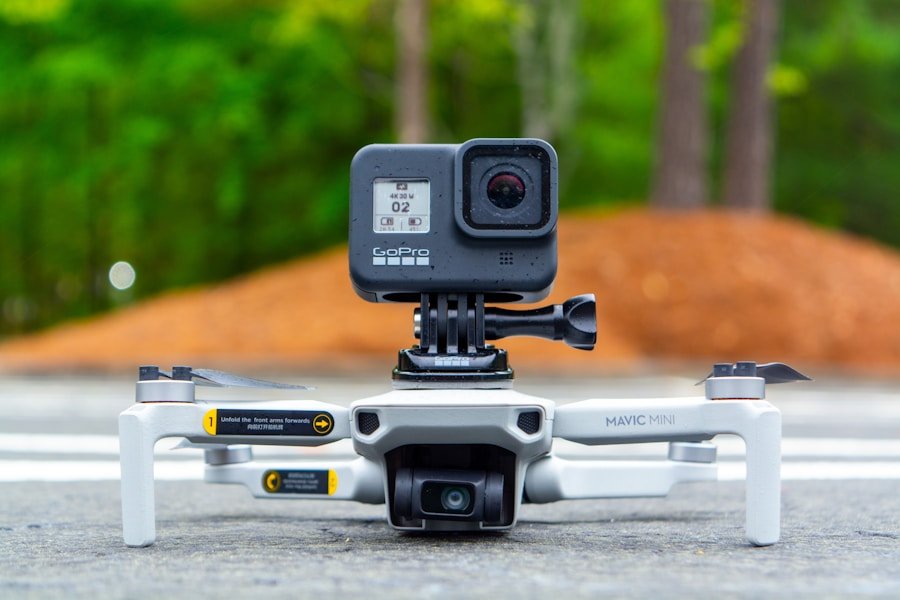When it comes to capturing action sequences, having multiple angles is crucial for creating dynamic and engaging footage. By incorporating different perspectives, you can provide viewers with a more immersive experience, allowing them to feel as though they are right in the middle of the action. Multiple angles also help to capture the full scope of the action, ensuring that no important moments are missed. Whether you are filming a high-speed car chase, an intense sports match, or a thrilling stunt, having multiple angles allows you to showcase the action from various viewpoints, adding depth and excitement to your footage.
In addition to enhancing the visual appeal of your video, multiple angles also serve a practical purpose. They provide you with options during the editing process, allowing you to choose the best shots and create a seamless and engaging final product. By having a variety of angles to work with, you can ensure that your video is visually captivating and keeps viewers engaged from start to finish.
Choosing the Right Angles for Different Action Sequences
When it comes to capturing action sequences, choosing the right angles is essential for creating compelling and impactful footage. Different types of action require different approaches when it comes to camera angles. For example, for fast-paced and dynamic action such as a race or a fight scene, close-up and low-angle shots can help to convey the intensity and adrenaline of the moment. On the other hand, for more expansive and dramatic action such as a skydiving or mountain biking, wide-angle and aerial shots can help to capture the grandeur and scale of the activity.
It’s important to consider the specific requirements of each action sequence and choose angles that will best showcase the movement, energy, and emotion of the moment. By carefully selecting the right angles for each scene, you can ensure that your footage is visually captivating and effectively conveys the excitement and drama of the action.
Utilizing Camera Movement to Enhance Action Shots
In addition to choosing the right angles, utilizing camera movement can further enhance the impact of action shots. Dynamic camera movements such as panning, tracking, and crane shots can add a sense of fluidity and energy to your footage, helping to immerse viewers in the action. For example, using a tracking shot to follow a skateboarder as they perform tricks or a crane shot to capture a high-speed car chase can create a sense of excitement and intensity.
Camera movement can also help to highlight specific elements of the action, such as showcasing the speed and agility of an athlete or emphasizing the power and force of a stunt. By incorporating camera movement into your action sequences, you can create a more dynamic and engaging viewing experience, drawing viewers into the heart of the action.
Creating Seamless Transitions Between Multiple Angles
When working with multiple angles, creating seamless transitions between shots is essential for maintaining the flow and continuity of your action video. Jarring or abrupt transitions can disrupt the viewing experience and detract from the impact of the action. To ensure smooth transitions between multiple angles, it’s important to consider factors such as timing, movement, and visual coherence.
One effective technique for creating seamless transitions is to use match cuts, where similar elements in consecutive shots are aligned to create a smooth transition. For example, matching the movement of a character or object in one shot with that in the next shot can help to create a seamless transition between angles. Additionally, using transitional elements such as wipes, fades, or dissolves can help to blend different angles together and maintain visual continuity.
Incorporating Slow Motion and Time-lapse Techniques for Dramatic Effect
Incorporating slow motion and time-lapse techniques can add a dramatic and visually stunning element to your action footage. Slow motion can be used to highlight specific moments within an action sequence, emphasizing details such as impact, emotion, or technique. For example, capturing a martial artist’s precise movements in slow motion can showcase their skill and precision, while slowing down a dramatic stunt can heighten the sense of danger and excitement.
On the other hand, time-lapse techniques can be used to condense lengthy action sequences or showcase changes over time in a visually captivating way. For example, using time-lapse to capture the transformation of a landscape during a long-distance race or the progression of a complex stunt setup can add depth and interest to your footage. By incorporating slow motion and time-lapse techniques into your action video, you can create a more dynamic and visually compelling viewing experience.
Editing and Post-Production Tips for Maximizing Impact
In the post-production phase, there are several editing techniques that can be used to maximize the impact of your action video. One important consideration is pacing – by carefully timing cuts and transitions, you can create a sense of rhythm and energy that enhances the impact of the action. Additionally, using effects such as color grading and visual enhancements can help to elevate the visual appeal of your footage, adding depth and intensity to the action.
Sound design also plays a crucial role in maximizing the impact of your action video. By incorporating impactful sound effects, music, and audio enhancements, you can create a more immersive and engaging viewing experience. Whether it’s adding realistic sound effects to enhance the impact of a stunt or choosing music that complements the energy and emotion of the action, sound design can greatly enhance the overall impact of your video.
Showcasing the Final Product: Sharing Your Action Video Mastery with the World
Once you have completed your action video masterpiece, it’s time to share it with the world. There are several platforms where you can showcase your work, such as social media, video sharing websites, or film festivals. When sharing your video online, it’s important to consider factors such as video quality, title and description optimization, and audience engagement strategies to maximize its reach and impact.
In addition to online platforms, film festivals provide an opportunity to showcase your action video to a wider audience and receive recognition for your work. By submitting your video to relevant festivals and events, you can connect with industry professionals, fellow filmmakers, and potential collaborators while gaining exposure for your work.
In conclusion, capturing compelling action footage requires careful consideration of multiple angles, camera movement, editing techniques, and post-production enhancements. By understanding the importance of multiple angles and choosing the right perspectives for different action sequences, you can create visually captivating footage that effectively conveys the excitement and drama of the moment. Utilizing camera movement, seamless transitions between angles, slow motion and time-lapse techniques, as well as editing and post-production tips can further enhance the impact of your action video. Finally, showcasing your final product through online platforms or film festivals allows you to share your mastery with the world and connect with a wider audience. With these techniques in mind, you can create action videos that are visually stunning, emotionally engaging, and impactful for viewers.








